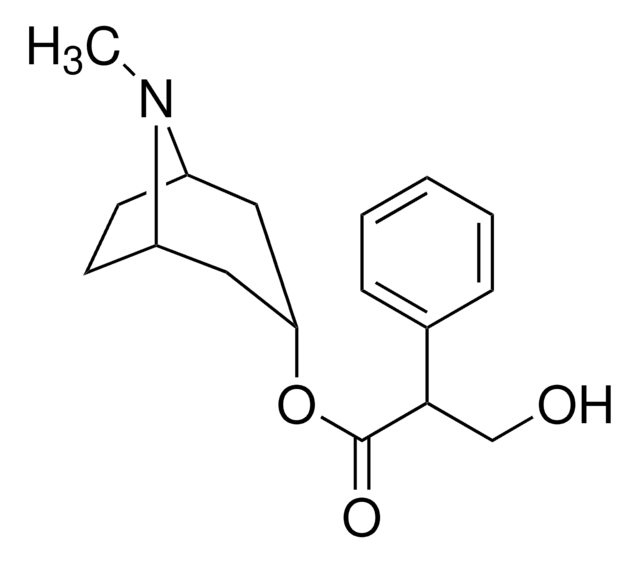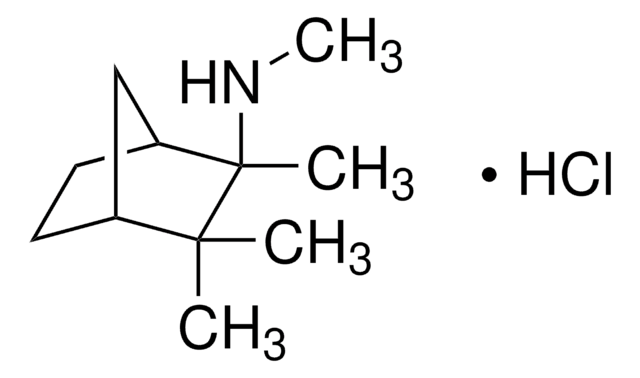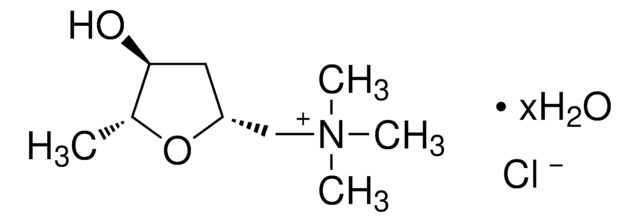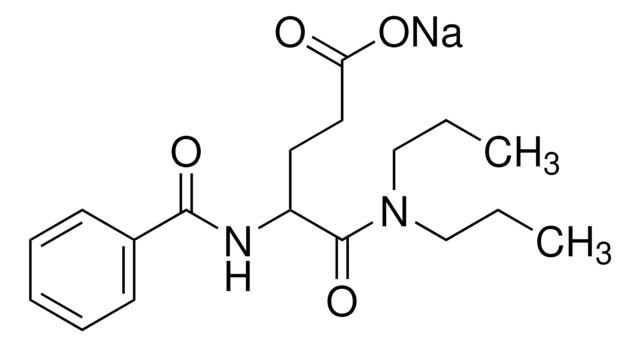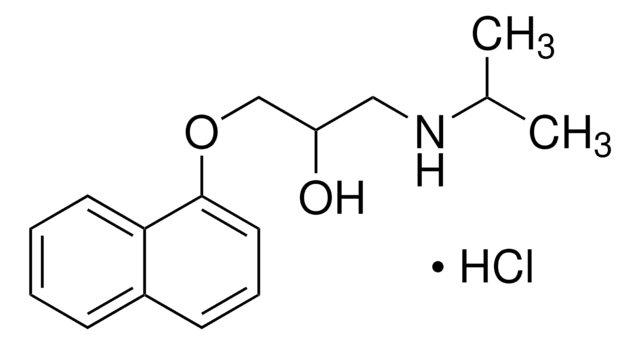A0132
Atropine
≥99% (TLC), powder
Sinónimos:
Hyoscyamine, Tropine tropate, endo-(±)-α-(Hydroxymethyl)benzeneacetic acid 8-methyl-8-azabicyclo[3.2.1]oct-3-yl ester
About This Item
Productos recomendados
Ensayo
≥99% (TLC)
Formulario
powder
color
white
solubilidad
H2O: 2 mg/mL
dilute aqueous acid: soluble
ethanol: soluble
cadena SMILES
CN1[C@H]2CC[C@@H]1C[C@@H](C2)OC(=O)C(CO)c3ccccc3
InChI
1S/C17H23NO3/c1-18-13-7-8-14(18)10-15(9-13)21-17(20)16(11-19)12-5-3-2-4-6-12/h2-6,13-16,19H,7-11H2,1H3/t13-,14+,15+,16?
Clave InChI
RKUNBYITZUJHSG-SPUOUPEWSA-N
Información sobre el gen
human ... CHRM1(1128) , CHRM2(1129) , CHRM3(1131) , CHRM4(1132) , CHRM5(1133) , LOC730413(730413)
mouse ... Chrm1(12669)
rat ... Chrm1(25229) , Chrm2(81645) , Chrm3(24260) , Drd2(24318) , Htr1a(24473)
¿Está buscando productos similares? Visita Guía de comparación de productos
Descripción general
Aplicación
- as a tastant to analyse the bitter taste perception in Drosophila larvae
- as a muscarinic acetylcholine autoreceptors (mAChRs) antagonist to investigate the involvement of individual mAChR subtypes in the control of synapse elimination
- to investigate the pathways of serotonin (5-HT) action in zebrafish hearts
Acciones bioquímicas o fisiológicas
Características y beneficios
Reconstitución
Aplicación
Palabra de señalización
Danger
Frases de peligro
Consejos de prudencia
Clasificaciones de peligro
Acute Tox. 2 Inhalation - Acute Tox. 2 Oral
Código de clase de almacenamiento
6.1A - Combustible acute toxic Cat. 1 and 2 / very toxic hazardous materials
Clase de riesgo para el agua (WGK)
WGK 3
Punto de inflamabilidad (°F)
Not applicable
Punto de inflamabilidad (°C)
Not applicable
Equipo de protección personal
Eyeshields, Faceshields, Gloves, type P3 (EN 143) respirator cartridges
Elija entre una de las versiones más recientes:
¿Ya tiene este producto?
Encuentre la documentación para los productos que ha comprado recientemente en la Biblioteca de documentos.
Los clientes también vieron
Nuestro equipo de científicos tiene experiencia en todas las áreas de investigación: Ciencias de la vida, Ciencia de los materiales, Síntesis química, Cromatografía, Analítica y muchas otras.
Póngase en contacto con el Servicio técnico
